Key takeaways:
- Ocean plastic poses a significant threat to marine life and ecosystems, emphasizing the urgent need for conservation efforts.
- Art is an effective medium for raising awareness about ocean pollution, transforming waste into meaningful creations that inspire change.
- Engaging children in creative projects with ocean plastic fosters their environmental stewardship and connection to marine ecosystems.
- Every small action, such as reducing single-use plastics, contributes positively to ocean health and supports conservation efforts.
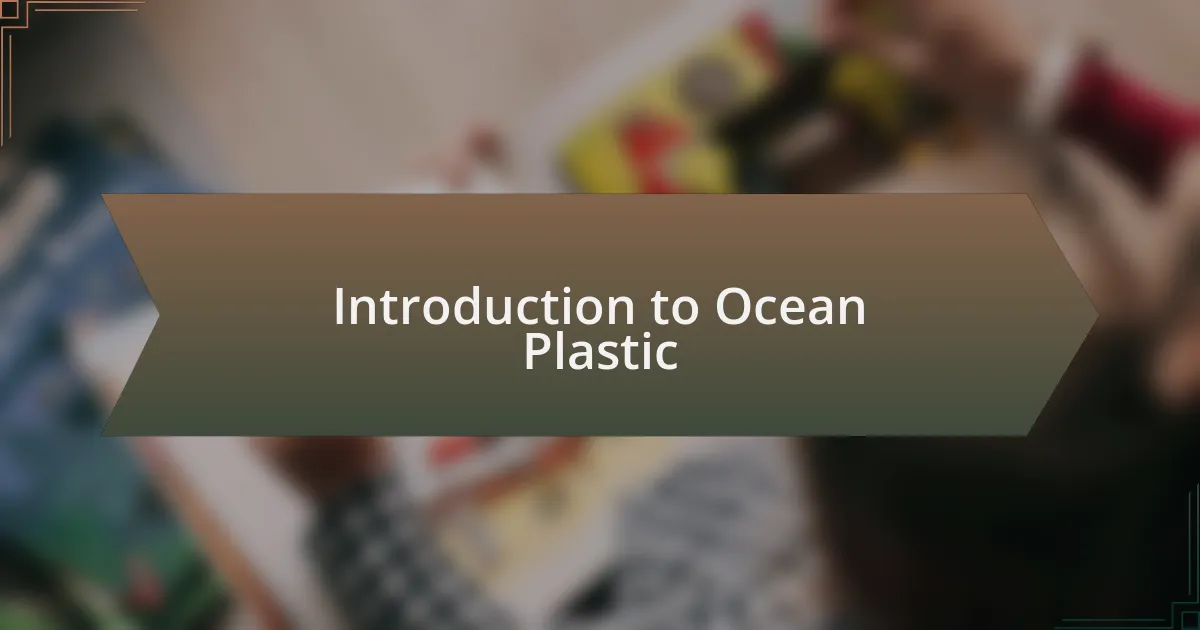
Introduction to Ocean Plastic
Ocean plastic is a pressing issue that affects not just marine life, but our entire planet. I remember the first time I walked along a beach littered with fragments of plastic; it struck me deeply to think that something so beautiful could be marred by human waste. Have you ever considered how a simple plastic bottle could travel from a city and end up in the ocean, breaking down into tiny pieces known as microplastics?
These microplastics pose a serious threat to marine ecosystems. I find it alarming that marine creatures often mistake these tiny particles for food, leading to their suffering and, ultimately, our own when we consume seafood. How does it feel to know that our habits might be endangering the very creatures we admire?
Understanding the scope of ocean plastic is a crucial step in inspiring action. It’s not just about the sight of plastic floating on waves; it’s a call to reflect on our relationship with the ocean. When I see discarded plastic, it reminds me of the potential beauty that could be reclaimed and transformed into something meaningful—art that speaks to our duty to protect the environment.
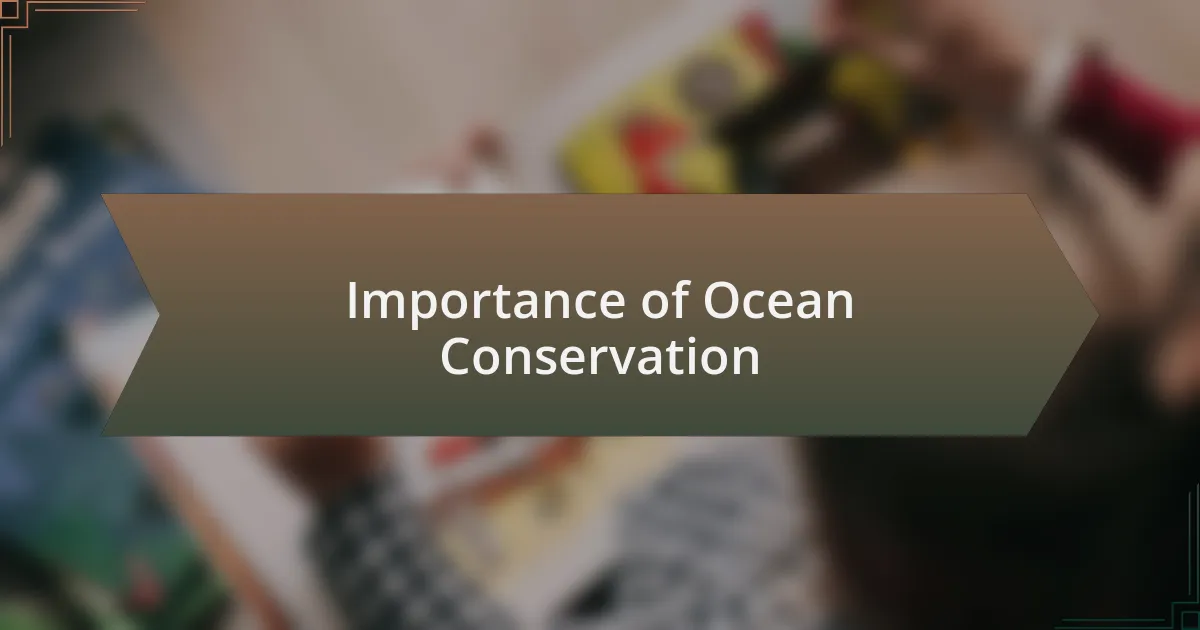
Importance of Ocean Conservation
Ocean conservation is essential for maintaining the balance of our planet’s ecosystems. When I volunteered at a beach clean-up, it was eye-opening to see firsthand how debris affects not just the scenery, but the intricate web of life beneath the waves. Have you ever thought about how the health of our oceans directly impacts food sources, climate regulation, and even our own well-being?
The sheer scale of pollution is staggering, with an estimated eight million tons of plastic entering the ocean each year. I often ponder the long-term implications of these staggering numbers. Can you imagine the immense toll this takes on marine biodiversity? It stirs a sense of urgency in me; the corals, fish, and other species deserve a chance to thrive without the threat of pollution looming overhead.
Beyond the aesthetic value, our oceans perform critical functions for humanity, such as producing oxygen and regulating climate. I know many people may feel disconnected from the ocean, living miles away from coastal areas. But I’ve learned that every small action, whether it’s reducing single-use plastic or supporting conservation efforts, contributes to a larger wave of positive change. How can we afford to ignore the role the ocean plays in our very existence?
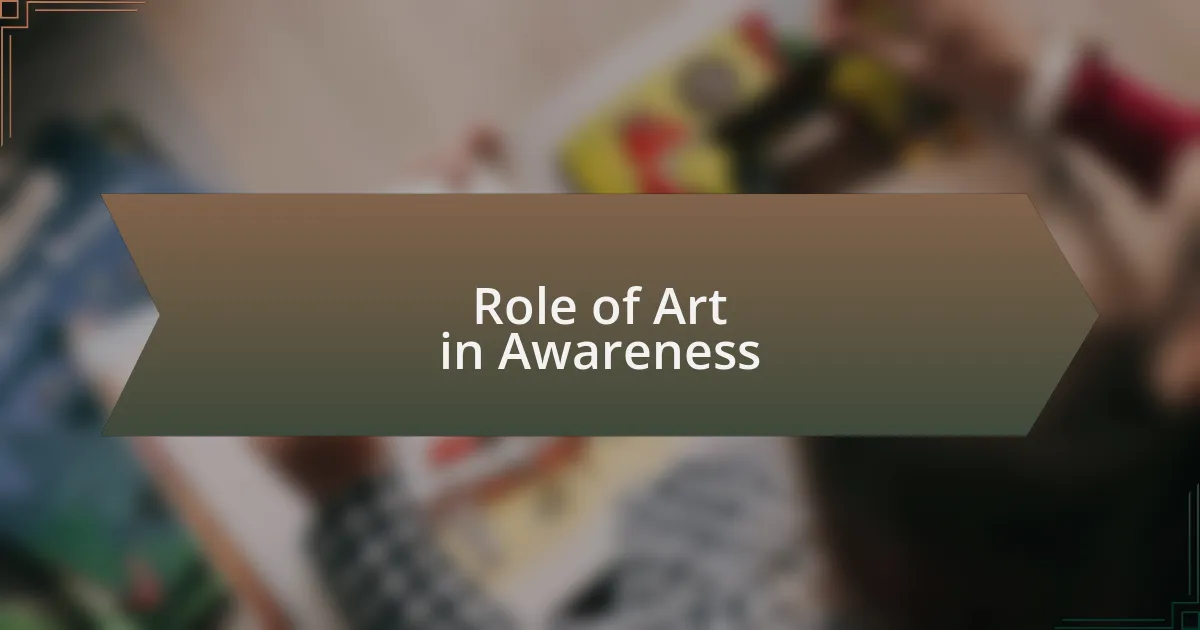
Role of Art in Awareness
Art serves as a powerful tool for sparking awareness about ocean conservation, often transcending language barriers. I recall visiting an art installation made entirely from ocean debris, and it was a profound moment—seeing what we consider waste transformed into thought-provoking pieces. It made me reflect: how can something so harmful be elevated into something beautiful and meaningful?
Through creative expression, artists can evoke emotions that lead to action. One day at an art workshop, I witnessed a child’s eyes widen when they realized the materials they were using to create had once polluted our beaches. Their excitement turned into a burning desire to educate others, showcasing how art can ignite passion and inspire change among the younger generation.
Art not only raises awareness but also fosters community discussions about pressing issues like plastic pollution. I’ve participated in local exhibitions where artists openly share their stories behind their pieces, encouraging conversations about our oceans. These dialogues provide an invaluable opportunity to connect with others who share a commitment to conservation, prompting the question: how can we harness this creative energy to inspire wider action for ocean health?

My Journey with Ocean Plastic
My journey with ocean plastic began on a beach cleanup day that left a lasting impression on me. As I sifted through the sand, collecting an endless array of plastic debris, I felt a mix of frustration and inspiration. I picked up a vibrant blue piece of plastic and wondered, “How did this end up here, and could it be transformed into something beautiful?” That question lingered, igniting my passion for creating art from the very materials that threaten our oceans.
With each collection of ocean plastic, I began to see possibilities rather than problems. I remember one evening, sitting on my porch, surrounded by a pile of colorful plastics. It felt almost magical as I started to piece them together, forming shapes and sculptures. Each creation was not just an artwork; it served as a visual narrative of the ocean’s plight. I could almost hear the waves whispering their stories through the remnants of their pollution.
As I shared my art with others, I experienced a powerful shift in perspective—not just for myself, but for those who viewed my pieces. I vividly recall how a group of schoolchildren gazed at my sculptures with wide eyes, and it struck me. They were not just looking at plastic; they were confronting their role in the conservation of our oceans. It reminded me of the potential art holds to illuminate the path toward change. How can we inspire future generations to cherish our seas if we don’t engage their imaginations?
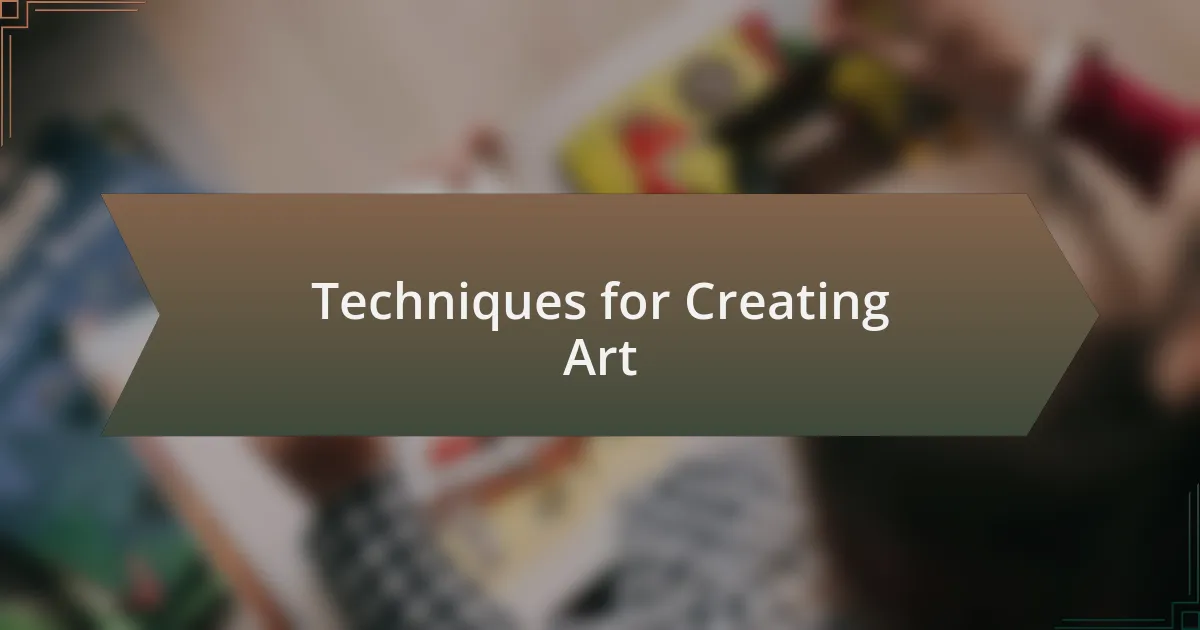
Techniques for Creating Art
When I first started working with ocean plastic, I experimented with different techniques to manipulate these materials. One method that truly resonated with me was assemblage, where I combined various pieces to create a cohesive whole. As I glued different elements together, I often found myself lost in thought, pondering how each fragment connected to the broader story of environmental impact.
I also dabbled in collage, layering bits of plastic to form textured landscapes. I distinctly remember the moment I crafted a piece that resembled an underwater scene, filled with vibrant colors and unexpected shapes. This technique not only allowed me to express my creativity, but it also sparked conversations about the real-life environments these plastics were sourced from. Could art be a bridge between awareness and action?
Another approach I embraced was the use of upcycling, transforming items that would otherwise be discarded into unique sculptures. Each time I shaped a piece, I felt a sense of pride, knowing I was breathing new life into something once deemed worthless. Have you ever felt the thrill of giving a second chance to something others have overlooked? That’s the magic of using recycled materials in art; it carries with it a narrative of hope and renewal, inviting viewers to rethink their relationship with waste.
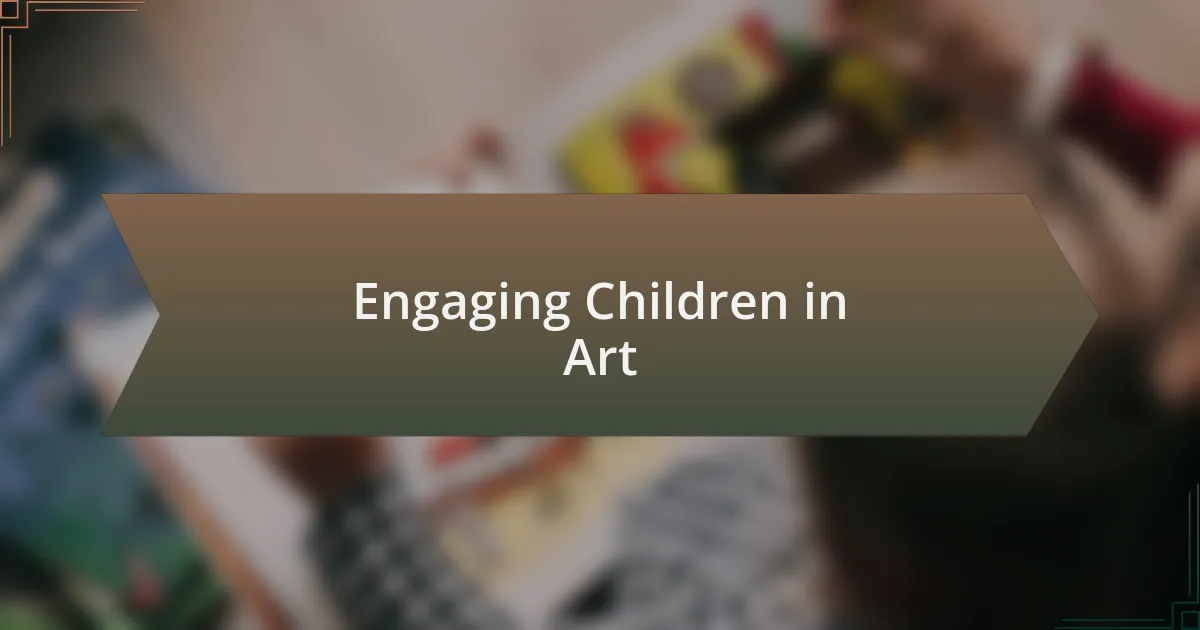
Engaging Children in Art
One of the most rewarding experiences I’ve had was watching children dive into their art projects with ocean plastic. Their eyes sparkled with curiosity as they sorted through colorful fragments, each one brimming with potential. I remember a young girl enthusiastically declaring that her sculpture would tell the story of a fish trapped in a plastic world – her imagination was both heartbreaking and beautiful.
As they worked, I encouraged them to think about not just what they were creating, but also why they were creating it. One boy asked me, “Can our art really change the world?” I smiled and replied, “Absolutely! Every piece holds a message, and your voice is powerful.” Engaging children in art like this fuels not only their creativity but also their understanding of environmental stewardship.
When I laid out different tools and materials, I noticed how the freedom to express themselves inspired their collaborative spirit. One group of kids decided to merge their ideas, creating a massive mural that depicted a vibrant ocean teeming with life. Seeing them connect and share their visions reminded me that art is not just about individual expression but also about building community and awareness. Isn’t that what we all hope for?

Inspiring Future Ocean Stewards
One afternoon, as I observed a group of children crafting their creations, a young boy paused and asked, “Do you think our art can help the ocean?” His question reverberated through the room, and I realized that in their playful exploration with ocean plastic, they were already becoming stewards of the sea. Witnessing their genuine concern for marine life ignited a spark in me—I felt they were not just creating art, but also forming a bond with the ocean.
I remember another moment when a child painted a vibrant mural of a sea turtle surrounded by swirling plastics. As she painted, I could see her understanding deepen; she wasn’t just depicting a creature, but illustrating the struggle it faces. This realization was transformative. It reminded me of the sheer power art has to evoke empathy and inspire change, bridging the gap between their innocent creativity and the pressing environmental issues we face.
These hands-on experiences not only foster artistic skills but also nurture a sense of responsibility toward our oceans. What if every child who created with ocean plastic carried this passion into adulthood? Because I believe that cultivating environmental awareness through art today can empower the ocean stewards of tomorrow, ensuring that future generations advocate for a cleaner, healthier planet.